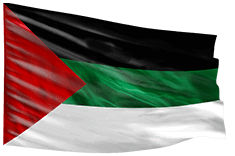Origins of the Arab Revolt
Over the course of its development, the Arab nationalist consciousness always called for an independent Arab state, irrespective of its geographical framework, led by one of Mecca’s sharifs.


Over the course of its development, the Arab nationalist consciousness always called for an independent Arab state, irrespective of its geographical framework, led by one of Mecca’s sharifs.
Arabs looked up to Sharif Hussein bin Ali as their leader after he was appointed Sharif of Al Hijaz of Mecca in 1908. This initiative first bore fruit in 1913, with 35 Arab members of the Ottoman Chamber of Deputies delegating Sharif Hussein to speak for the Arabs.
Arab aspirations were met with encouragement and support from Britain, especially after the war started and Turkey sided with Germany, against Sharif Hussein’s advice to Sultan Mehmed V Reshad not to enter the fighting.
"Send the blond horse" is a coded message included in a letter Prince Faisal sent to his father, Sharif Hussein, signalling the start of the Great Arab Revolt.
The morning of 10 June 1916 was a day marked in history books, embodying Arab determination to achieve their sought-after aspirations.
Al Qibla used the Quranic verse, “We appointed the Qibla to which thou wast used, only to test those who followed the Apostle from those who would turn on their heels from the faith” (Al Baqarah: 143) as its motto.
The concept of the Revolt’s banner came from the symbols of the Arab Awakening, and there was no foreign interference in its creation. The Great Arab Revolt forces originally carried the red Hashemite flag.
The Great Arab Revolt armies executed military operations of varying levels in the Jordanian theatre between 1 July 1917, until the end of September 1918. The operations covered almost all of Jordanian territory, according to well-set plans and accurate military vision.
The Syrian National Congress, held in Damascus in 1920, produced decisive outcomes supported by Sharif Hussein bin Ali, foremost of which declared the complete independence of Syria within its national borders, named Prince Faisal bin Al Hussein King of Hijaz and rejected the Zionist Balfour Declaration.
His Highness Prince Abdullah arrived in Maan leading his military force on 21 November 1920, and realised that it would be impossible to face the two superpowers at the time — France and Britain — with a small number of fighters and no heavy weapons.
The Great Arab Revolt’s foremost achievements include the establishment of independent Arab kingdoms in Hijaz, Syria and Iraq as well as the establishment of an Emirate in Transjordan.